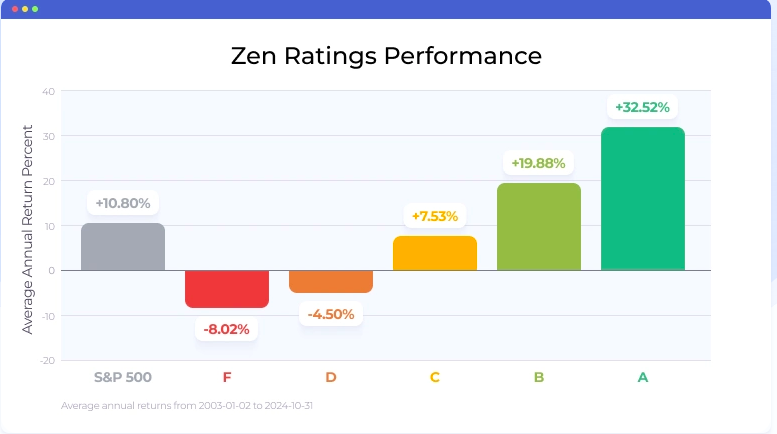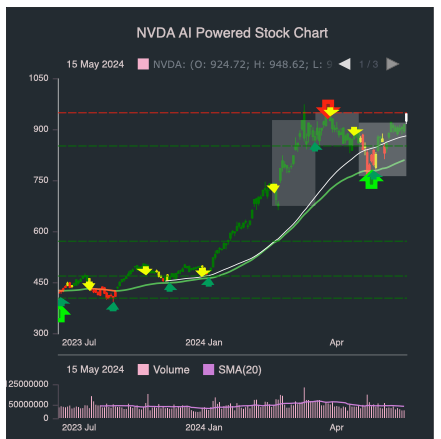Market coverage is an essential factor when evaluating AI trading platforms for stock prediction or analysis in that it defines the depth and breadth of assets and markets you are able to access. With a platform that offers comprehensive coverage, you can diversify your portfolio and avail of opportunities across the globe. You can also adapt to different trading methods. Here are the top ten tips to evaluate the market coverage of these platforms:
1. Evaluate Supported Asset Classes
Stocks: Make sure that the platform contains stocks from all major stock exchanges, such as NYSE, NASDAQ and LSE.
ETFs. Verify that the platform offers a variety of ETFs, so you have a diverse exposure.
Options and futures: Verify whether the platform is able to handle derivatives such as options, futures, and other instruments that leverage.
Forex and commodities. See whether there are any forex pairs available, as well as precious metals, energy commodities, and agricultural commodities.
Cryptocurrencies. Verify if the currency supports all major cryptocurrencies and altcoins (e.g. Bitcoin, Ethereum).
2. Check coverage of your area
Global markets: Make sure the platform has major markets in the world such as North America, Europe and Asia-Pacific.
Regional focus: Make sure you know whether the platform is focused on certain markets or regions that match your trading preferences.
Local exchanges: Check whether the platform supports regional or local exchanges that relate to your specific location or plan.
3. Assess Real-Time vs. Delayed Data
Real-time data - Ensure that the platform offers live market data that can help you make timely decisions, especially for active traders.
Delayed data: Check if delayed data is available at no cost or at a lower cost. This could be enough for investors who are looking to invest long-term.
Data latency: See if the platform minimizes data latency, especially for high-frequency trading.
4. Review historical data availability
Historical data depth Make sure the platform provides vast historical data (e.g. 10, more than 10 years) to backtest and analyze.
Examine the any granularity. Historical data can include daily, intraday and weekly the granularity.
Corporate actions - Verify previous data to confirm that it covers stock splits, dividends as well as other corporate actions.
5. Check Market Depth and Order Books
Platforms should offer Level 2 data (order-book depth) to help improve price discovery and execution.
Bid-ask spreads: Check if the platform is displaying real-time bid spreads for exact price.
Volume data: Make sure that the platform offers detailed volume data in order to evaluate market liquidity.
6. Check the coverage of Indices and Sectors
Major indices: Make sure the platform is able to handle major indices (e.g., S&P 500, NASDAQ 100, FTSE 100) for benchmarking and index-based strategies.
Sector-specific data: Find out if the platform provides data for specific sectors (e.g. technology or healthcare, energy,) to conduct a targeted analysis.
Customized indexes. Find out if the platform lets you create and monitor custom indexes based on the criteria that you specify.
7. Integrate Sentiment and News Data
News feeds : Ensure that you have a platform that allows live news feeds. Ideally, they should come from reputable media outlets (e.g. Bloomberg and Reuters) to cover the most important market occasions.
Sentiment analysis: See whether there are tools to perform sentiment analysis based on news articles or other data sources.
Event-driven trades: Verify the platform's support of event-driven trades (e.g. announcements on economic data or earnings announcements).
8. Make sure you have Multi-Market Capabilities for Trading
Cross-market trading : Ensure that the platform supports trading on multiple markets, asset classes and exchanges via a single interface.
Conversion of currency: Check if the platform supports multi-currency accounts as well as automated currency conversion to trade internationally.
Support for time zones: Check whether your platform permits you to trade across multiple time zones.
9. Examine the coverage of alternative data Sources
Alternative data: To gain unique insights, verify if the platform is able to incorporate other data sources.
ESG data. Find out if the platform has environmental, socio-economic, and governance data for socially responsible investing.
Macroeconomic data: Make sure the platform provides macroeconomic indicators (e.g., GDP, inflation, interest rates) for analysis of fundamentals.
Examine the Feedback of Users and Market Reputation
Feedback from users: Read user reviews to determine the reliability of the platform and market coverage.
The reputation of the company: Find out whether the platform has been acknowledged by experts in the industry for its market coverage.
Case studies and testimonials They will showcase the performance of the platform in particular asset classes or markets.
Bonus Tips
Trial period: Take advantage of the demo or trial version for free to test the market coverage and data quality.
API access Check whether the API of the platform supports customized analysis with market data.
Support for customers: Make sure whether the platform offers support for any queries relating to data or markets.
These guidelines will assist you assess the market coverage provided by AI trading platforms which predict or analyze price movements of stocks. So you'll have the ability to choose the platform which gives you the information and markets you need for successful trading. Market coverage that is comprehensive allows investors to diversify their portfolios, explore new opportunities and be able to adapt to changing market conditions. View the best ai for stock trading examples for blog recommendations including best AI stock, ai trading tools, stock ai, ai for trading, options ai, best AI stock trading bot free, ai investment app, ai trade, chatgpt copyright, ai investing platform and more.

Top 10 Tips On Assessing The Updates And Maintenance Of AI stock Predicting/Analyzing Trading Platforms
The maintenance and updates of AI stock prediction and trading platforms are critical for ensuring they are safe, effective and in line with the ever-changing market conditions. Here are 10 best tips for evaluating their updating and maintenance procedures.
1. Frequency of Updates
Find out the frequency of updates on your platform (e.g. weekly, monthly, or even quarterly).
Why are regular updates evidence of a growing business, and a responsiveness to market changes.
2. Transparency of Release Notes
Tip: Read the release notes on your platform to get information about any changes or improvements.
Release notes that are transparent demonstrate the platform's commitment to continuous improvement.
3. AI Model Retraining Schedule
Tip: Ask how frequently the AI models are trained using new data.
Reasons: Models have to change to remain relevant and accurate as market dynamics change.
4. Bug fixes and Issue Resolution
Tips: Make sure you check how fast the platform is able to fix bugs or other technical issues.
Reason: Rapid corrections to bugs will ensure the platform remains reliable and operational.
5. Updates on Security
Tip Verify the platform's security protocols are updated regularly to safeguard trading and user data.
The reason: Cybersecurity on financial platforms is vital to guard against breaches and fraud.
6. Integrating New Features
Examine the platform to determine whether it has introduced new features that are based on user or market feedback (e.g. improved analytics).
What's the reason? Feature updates demonstrate creativity and responsiveness to user needs.
7. Backward Compatibility
Tips: Ensure that the upgrades you install don't need major reconfigurations or interrupt the functionality of your current system.
What is the reason: Backward compatibility enables a smooth transition.
8. Communication between Users and Maintenance Workers
Tip: Find out how users are informed about planned maintenance or downtime.
What is the reason? Clear communication prevents the chance of disruption and boosts confidence.
9. Performance Monitoring and Optimization
Tips: Make sure that the platform constantly monitors key performance indicators like latency or accuracy and optimizes their platforms.
What's the reason? Continuous optimization ensures the platform remains effective and expandable.
10. Conformity with Regulation Changes
TIP: Determine if the platform is updating its features and policies to be in compliance with the latest rules on financial regulation or data privacy laws.
Why: To avoid legal risks and keep user trust, regulatory compliance is essential.
Bonus Tip: Integration of feedback from users
Check if updates and maintenance are based on feedback from users. This indicates a commitment to the user and a steadfast determination to make improvement.
If you evaluate the above elements by evaluating the above aspects, you'll be able to assess whether or whether the AI trading and stock prediction system you select is well maintained, current and capable adapting to the changing market conditions. Take a look at the recommended can ai predict stock market blog for more recommendations including ai for trading stocks, free ai tool for stock market india, best AI stocks, best ai trading platform, stocks ai, AI stock investing, ai in stock market, can ai predict stock market, best ai trading platform, stocks ai and more.
